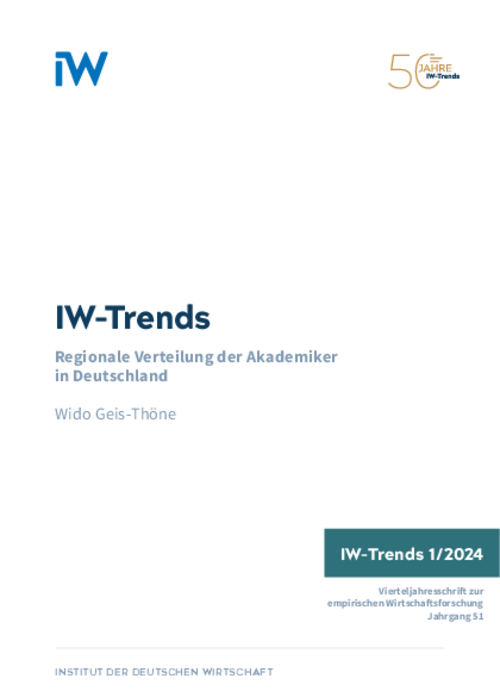Graduates in Germany are distributed very unevenly across the country. Taking the population aged between 35 and 44, who have generally already completed their higher education, in 2019 the highest proportions of university graduates were to be found in Berlin and the Munich regional planning area.

The Regional Distribution of Graduates in Germany

Graduates in Germany are distributed very unevenly across the country. Taking the population aged between 35 and 44, who have generally already completed their higher education, in 2019 the highest proportions of university graduates were to be found in Berlin and the Munich regional planning area.
These were 44.0 per cent and 42.9 per cent respectively, whereas the corresponding figures in some rural regions were below 15 per cent. Across Germany, 26.8 per cent of the population in this age group had graduated from university. An analysis by size of municipality shows that 36.9 per cent of people in cities with a population of over 100,000 are graduates, which is approximately twice the percentage of graduates in municipalities with fewer than 5,000 inhabitants (18.6 per cent). The proportion of graduates in these smaller population centres is also higher in urban than in rural areas. However, these differences apply almost exclusively to graduates of traditional research-oriented universities, whereas graduates of other tertiary institutions – particularly the more practically-oriented universities of applied sciences – are distributed very evenly. For example, among those aged between 35 and 44 the proportion of graduates of traditional universities is almost three times as high in large cities (26.8 per cent) as in small municipalities (9.5 per cent), while the proportions of graduates of other tertiary institutions are relatively similar at 10.2 per cent and 9.1 per cent respectively.

The Regional Distribution of Graduates in Germany

More on the topic

The Regional Distribution of Low-skilled Workers in Germany
Low-skilled workers in Germany are heavily concentrated in urban areas. In 2019, the proportion of 25- to 64-year-olds who had not completed at least two years of vocational training or higher education was almost twice as high in cities with a population of ...
IW
Part-time Jobs for Teenagers – A Question of Home Background
A part-time job that does not detract from their other activities can help young people to acquire competences and practise skills which will later benefit them in the labour market.
IW